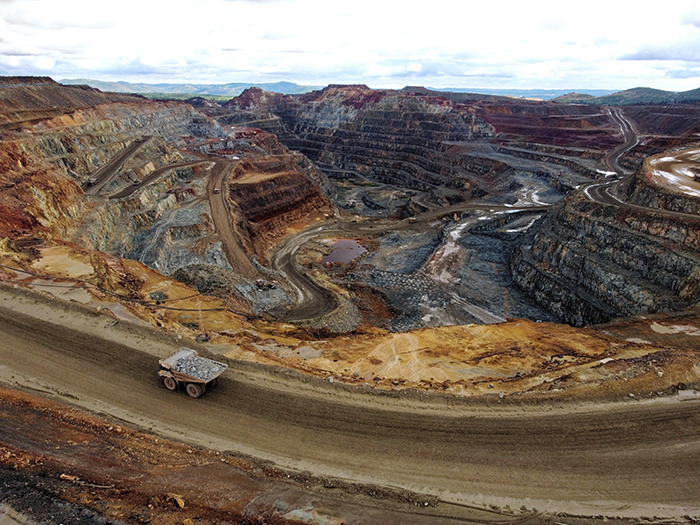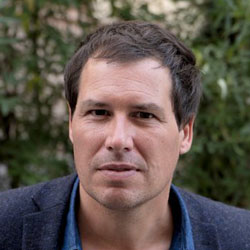Interviews / Energy and Raw Materials
20 February 2023
Dependence on Critical Raw Materials: Does Europe Have a Strategy?

Dependent on its supply of critical raw materials, the European Union announced the presentation of a Critical Raw Material Act in March. As these metals play a major role in the energy transition of European countries, what is the European Union’s strategy for securing critical raw materials? How does this strategy differ from those of China and the United States? What are the risks associated with the dependence of European states? What could the Critical Raw Material Act change? A point of view from Guillaume Pitron, associate researcher at IRIS, specialist in critical raw materials.
What is the European Union’s strategy regarding its supply of critical raw materials? How does this strategy differ from that of China and the United States?
The term “strategy” itself is already a subject of debate. Ursula von der Leyen did declare in a September 2022 speech to the European Parliament that “lithium and rare earths will soon be even more important than oil and gas.” Thierry Breton, the European Commissioner for the Internal Market, frequently speaks on the matter, and a Critical Raw Material Act is announced for March. But there is a gap between words and the implementation of a strategy…
Since 2011, European action has primarily involved publishing, every three years, a list of “critical” raw materials that are at risk of supply shortages, given that production is concentrated in the hands of certain producing countries, like China. The Raw Materials Unit, attached to the Directorate-General for Internal Market, Industry, Entrepreneurship, and SMEs (GROW), regularly publishes studies, as does the Joint Research Centre, the European Union’s research laboratory. The Raw Materials Unit also coordinates a budding mineral diplomacy, engaging in dialogue with South American countries, Japan, and Greenland. Created in 2020, the European Raw Materials Alliance brings together industry stakeholders and identifies extraction and recycling projects for rare earths in Europe.
However, this is in no way comparable to the policies pursued by Japan and the United States. Japan’s subsoil is extremely poor in minerals, and Tokyo understood, more than a decade ago, the necessity to reduce its dependence on Chinese supplies. The Japanese have long invested in the recycling of magnets. The Japan Oil, Gas and Metals National Corporation (JOGMEC), an independent administrative institution, is responsible for building strategic stocks of 34 “rare metals” (tungsten, cobalt, rare earths, vanadium, etc.). It is also JOGMEC that has been granting loans to Lynas, an Australian rare earths company, since 2011, which, in return, agrees to supply part of its production to Japan.
On the U.S. side, President Trump politicized the issue of rare earths with his “America First” slogan. His successor, Joe Biden, has taken a similar approach to critical minerals. In addition to updating the U.S. list of “critical minerals” in 2022 (currently 50), a dramatic move was the use of the Defense Production Act, which hadn’t been used since the Cold War, to accelerate the production of critical metals on U.S. soil for industries like automobiles and defense. In 2022, the U.S. also created the Minerals Security Partnership, a forum uniting mineral-producing countries and about ten consumer countries (including France), aimed at developing common production standards for minerals.
The U.S. has been slow to react to the rare earths issue. While their response is not yet fully aligned with the needs and challenges, it is more assertive than that of the Europeans, who are still lagging behind… It must be said that the U.S. fully understands the national security implications of the continuity of such supplies, as rare earths and antimony (just to name two) are essential for industrializing tanks, F-35s, and precision missiles.
Are European Union countries dependent on other powers for critical raw materials? What are the risks associated with this dependence?
Europe is heavily dependent on non-European countries for the vast majority of its needs. This includes Chile for lithium and copper, the Democratic Republic of Congo for cobalt, South Africa for platinum group metals, Russia for palladium, and, of course, China for critical materials such as antimony, rare earths, tungsten, graphite, and metal silicon. The risks associated with this dependence have long been identified: by relying on Chinese export quotas, Europeans risk being unable to obtain these resources or being forced to purchase them at higher prices than their competitors based in China.
Since the turn of the millennium, China has been following a strategy of moving down the value chain. Beijing no longer wants to sell metals, but finished products (solar panels, electric vehicles) made with materials extracted from its soil. In doing so, China can showcase its leadership not only in the production of strategic resources but also in the manufacturing of Greentech. “Green jobs,” however, are being created in Asia more than in Europe.
The success of this strategy has inspired other countries, such as Indonesia, a major nickel producer, a metal essential for the production of electric vehicle batteries. In 2020, Indonesia imposed an embargo on the export of unrefined nickel. The goal is also to produce cathodes, anodes, and battery cells on Indonesian soil. In this regard, Indonesian President Joko Widodo hopes to convince Elon Musk to invest in building a gigafactory (a battery manufacturing plant) on the archipelago.
Encouraged by the desire for wealth and a resource nationalism, resource-rich countries in the Global South understand that they will be the winners of the ecological transition, not only by producing Greentech minerals but also by manufacturing the technologies. According to the well-known formula from The Economist, after the era of petro-states, we are entering the era of “electro-states.” For Europe, this brings the risk of industrial downgrade.
What could change with the Critical Raw Material Act?
The Critical Raw Material Act was announced in September 2022 by Ursula von der Leyen, and its specific content will be revealed in March. However, Commissioner Thierry Breton has already publicly outlined the contours of this legislation: identifying the most strategic resources, supporting private investments in extraction, recycling, and processing of metals, building strategic stockpiles, establishing extraction standards that respect human rights and the environment in non-European producer countries, to avoid penalizing the competitiveness of potential European production, which would also be governed by a mining code.
The Critical Raw Materials Act is unlikely to contain provisions significantly different from those proposed in reports by the Raw Materials Unit over the past twelve years. The novelty lies more in the politicization of the issue of rare, critical, and strategic metals that this legislation will bring. For a long time, no senior official from the European Commission attended the Raw Materials Week, an annual event organized in Brussels by the Commission to discuss critical resources. During these roundtables, many high-ranking European officials speaking on the subject were not very knowledgeable about it… Thus, European policy on critical metals was stagnating due to a lack of high-level commitment. The Critical Raw Material Act could shift this awareness up to the highest levels of the European administration regarding the strategic importance of critical metals. Perhaps then, it will be legitimate to speak truly of a “strategy”! The international context supports this evolution, as the Covid-19 pandemic and the war in Ukraine have made Europeans realize their dependence on Russian gas and Chinese masks. Minds are now more ready to grasp the extent of our loss of mineral sovereignty.

